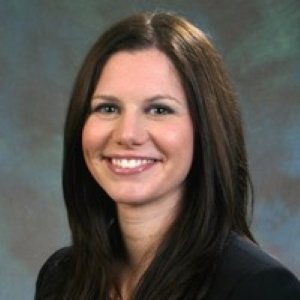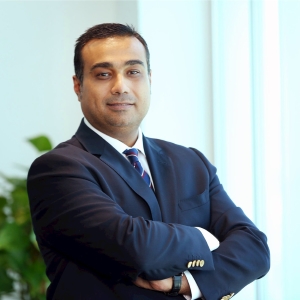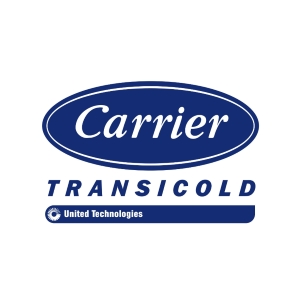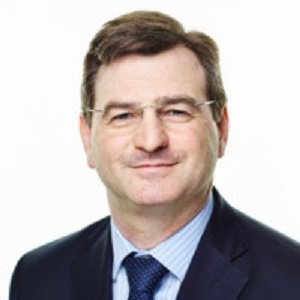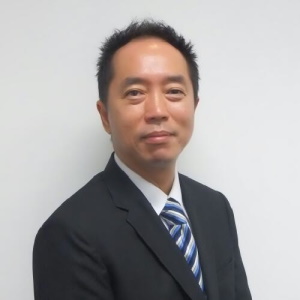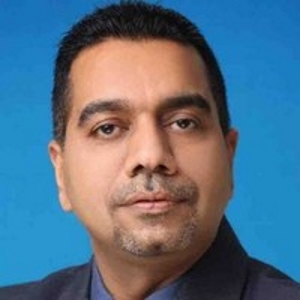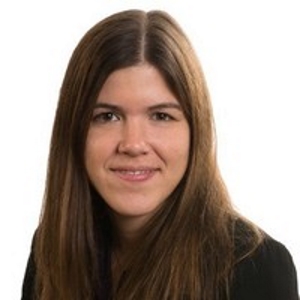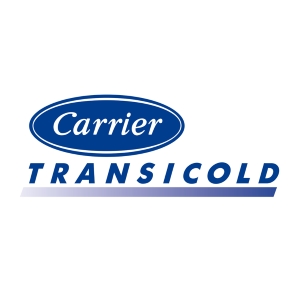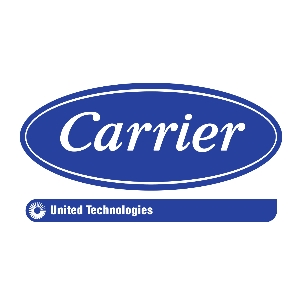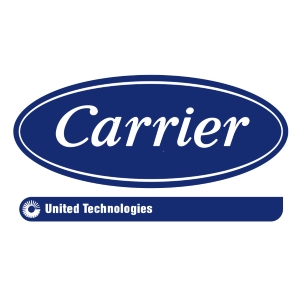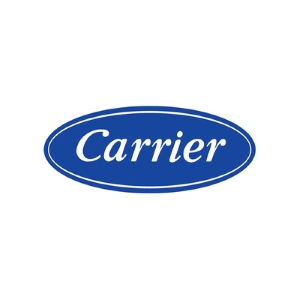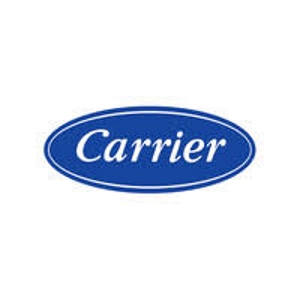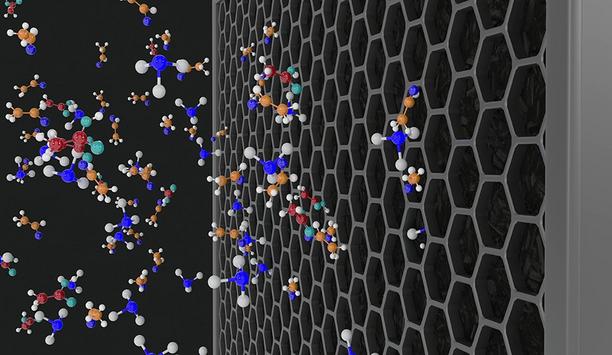Carrier Corporation - Experts & Thought Leaders
White papers from Carrier Corporation
Air-Cleaning And Filtration
DownloadLatest Carrier Corporation news & announcements
Carrier is proud to introduce new BluEdge® lifecycle service offerings as part of the growing QuantumLeap™ portfolio of scalable, purpose-built solutions designed for data center operators. Carrier is a part of Carrier Global Corporation, global leader in intelligent climate and energy solutions. Carrier’s BluEdge for Data Centers offerings span the entire equipment lifecycle to give data center operators the added peace of mind that comes with Carrier’s expert service and monitoring. Agreements for different needs Each agreement is tailored to the individual needs of a data center customer Each agreement is tailored to the individual needs of a data center customer and includes 24/7/365 support through dedicated technicians and a global network of experts; a responsive parts and components procurement network featuring on-site or regional stocks; and cutting-edge analytics to decipher data, draw insights and implement solutions before issues arise. “We understand the critical nature of your thermal management requirements and will work hand-in-hand to design tailored solutions built to your data center’s specific needs,” said Christian Senu, Executive Director, Data Centers and Mega Projects, Carrier. Christian Senu adds, “Carrier BluEdge and our dedicated network of technicians provide your data center with reliable expertise and security as part of Carrier QuantumLeap and our commitment to help minimize downtime, maximize efficiency and ensure the success of our data center partners.” Tailored solutions Other tailored solutions that can be included in a BluEdge Service offering include predictive maintenance, comprehensive service agreements, rental solutions and upgrades. Flexible plans are available to help protect HVAC system investments, ensuring peak performance and longevity. Carrier QuantumLeap is a comprehensive suite of scalable solutions designed to support data center operators through a portfolio of advanced, energy-efficient cooling solutions that includes chillers, air handlers, Automated Logic building controls and Nlyte® DCIM software, customizable aftermarket programs and a global service network.
Automated Logic and the Laurel Institutes are partnering together to help build a new generation of HVAC technicians, while outfitting campuses in three states with the latest building automation systems. Automated Logic, a pioneering provider of innovative building-management solutions, is a part of Carrier Global Corporation, a pioneer in intelligent climate and energy solutions. Carrier’s TechVantage Initiative The partnership is part of Carrier’s TechVantage Initiative, which involves hiring 1,000 service technicians in the United States and providing additional training to over 100,000 Carrier and Carrier partner HVAC technicians within five years. Carrier is forming strategic alliances with vocational and technical institutes across the country to support the initiative and prepare technicians for cutting-edge HVAC solutions. Hands-on training and small class sizes The partnership is part of Carrier’s TechVantage Initiative, which involves hiring 1,000 technicians Founded in 1985, the Laurel family of schools, including Laurel College of Technology, Laurel Business Institute and Laurel Technical Institute, is a well-known post-secondary technical school organization that offers hands-on training and small class sizes, taught by highly skilled and experienced instructors. In addition to multiple locations in Pennsylvania, Laurel also has campuses in Morgantown, West Virginia and Fort Mill, South Carolina. Automation graduates “The cutting-edge technology that Automated Logic will be equipping our schools, teachers and students with will allow our graduates to be among the most well-prepared automation graduates not only in this region, but throughout the country,” said Douglas Decker, Chief Operating Officer of Laurel Institutes. He adds, “The technology that ALC brings to the table is among the very best.” Partnership between Carrier and Laurel The partnership between Carrier and Laurel includes: Laurel campuses being outfitted with Automated Logic control systems to efficiently regulate commercial HVAC, electrical and other large facility mechanical systems, Automated Logic experts providing training to Laurel faculty, donating direct-training hours and offering field trips to students to Automated Logic facilities as they learn to install, build and troubleshoot the latest building automation systems, and Exclusive employment opportunities for Laurel students. Automated Logic–Laurel partnership “With the Automated Logic – Laurel partnership, students can go from their campus to anywhere in the world with the global reach of Carrier and Automated Logic,” said Andy Bierer, Managing Director, Automated Logic Field. He adds, “With the foundational knowledge gained from Laurel programs, coupled with the access to Carrier’s world-class equipment, training and facilities, these students will be well-prepared for an exciting career in some fast-growing industries.”
Carrier Solutions UK is set to make an impact at HVAC+R at UK Construction Week 2025, with an impressive stand showcasing its expanded portfolio of best-in-class heating and cooling solutions. Carrier Solutions UK Ltd (formerly Toshiba Carrier UK Ltd) is a part of Carrier Global Corporation, a pioneer in intelligent climate and energy solutions. Latest advances in heat pumps Under the theme “Power Play as One Team”, Carrier Solutions UK’s stand will unite three of the industry-pioneering brands: Carrier, Toshiba, and Viessmann, under one cohesive presence, reinforcing Carrier’s position as pioneers within the UK HVAC sector. Visitors to Stand H670 can explore the latest advancements in heat pumps, VRF and hybrid heating technology, including: Toshiba: The all-new SHRMu VRF, expanded RAV Digital Inverter range (8-10 HP), DAISEIKAI, HAORI & SHORAI Edge wall-mounted units, standard cassette and one-way cassette systems and the award-winning Mini Touch Screen Controller. Carrier: AquaSnap 30AWH-P R290 monobloc heat pump, next-generation Carrier splits and the UK launch of the XCT8 VRF system. Viessmann: The Vitocal 150 residential heat pump, Vitocal 250 Pro (40 kW commercial heat pump) and Vitocrossal 200 CI3 commercial boiler. Future of heating and cooling “As a pioneering force in the HVAC industry, we are proud to present our latest innovations, demonstrating how Carrier Solutions UK is helping to shape the future of heating and cooling,” said David Dunn, Managing Director UK&I, Carrier RLC EMEA. He adds, “This year’s stand will showcase our best-in-class solutions across residential and light commercial applications, all designed to enhance efficiency, performance and sustainability.” Carrier Solutions’ sponsorship partner Mark Cueto MBE, former England Rugby World Cup winner and brand ambassador for Carrier The Carrier Solutions UK stand will welcome Thomas Heim, President, Carrier RLC EMEA and Faiz Afzal, Vice President of Sales, EMEA International, Carrier RLC EMEA. Adding to the excitement, Mark Cueto MBE, former England Rugby World Cup winner and brand ambassador for Carrier Solutions’ sponsorship partner, Sale Sharks, will make a special appearance, offering attendees the chance to meet a sporting legend. Latest in HVAC innovation With a product portfolio that addresses the full spectrum of residential, light commercial, and multi-fuel heating and cooling needs, Carrier Solutions UK continues to drive innovation and provide cutting-edge solutions for installers, contractors, and building professionals. Join Carrier Solutions UK at Stand H670 from 7-9 May 2025 at the London ExCeL to experience the latest in HVAC innovation.
Insights & Opinions from thought leaders at Carrier Corporation
Does anyone still think that heat pump technologies for residential applications are ineffective in cold climates? If so, they are missing opportunities available through advancements in heat pump technology. New developments in heat pumps are significantly transforming the residential HVAC market. These advanced heat pumps can maintain 100% heating capacity at 0 degrees F and operate efficiently at low temperatures. Secondary heat sources These capabilities reduce the need for secondary heat sources, leading to lower energy consumption and a reduced carbon footprint. By leveraging variable-speed technology and intelligent controls, newer systems optimize energy use, providing homeowners with both comfort and sustainability. Modern heat pumps, such as Carrier's Infinity® Variable-Speed Ultimate Cold Climate Heat Pump with Greenspeed® Intelligence, are designed to operate efficiently at temperatures as low as minus 23 degrees F, according to Carrier. Energy savings and total comfort Additionally, for those homeowners who are hesitant to make a full swap, dual fuel technology “These systems provide reliable heating even in the harshest conditions, often eliminating the need for secondary heat sources,” says Nick Arch, Carrier’s Vice President and General Manager, Residential Solutions. Additionally, for those homeowners who are hesitant to make a full swap, dual fuel technology, in which a heat pump is paired with a gas furnace, offers an optimal solution. “The system defaults to the gas furnace depending on the outside temperatures, allowing homeowners to experience energy savings and total comfort in harsh climates,” says Arch. “By leveraging advanced technologies, heat pumps now offer a sustainable and efficient solution for year-round comfort in any climate.” Cold Climate Heat Pump Challenge Driving innovation in heat pump technology has been the participation by Carrier and other manufacturers in the U.S. Department of Energy’s (DOE) Cold Climate Heat Pump Challenge. The challenge required heat pumps to operate efficiently at temperatures as low as minus 15 degrees F, pushing manufacturers to innovate in areas such as variable-speed compressors and advanced controls. Carrier's Infinity® Variable-Speed Ultimate Cold Climate Heat Pump with Greenspeed® Intelligence was developed as part of this initiative and has demonstrated exceptional performance in harsh climates. Benefits of newer technologies Carrier has established state-of-the-art training centers, such as one in Indianapolis “Carrier's successful completion of the challenge underscores our commitment to delivering high-efficiency, reliable heating solutions for cold climates,” says Arch. Carrier is also committed to educating both the dealer/installer community and consumers on the benefits of newer technologies through various initiatives. Carrier has established state-of-the-art training centers, such as one in Indianapolis, to provide hands-on training and certification programs. operation of new heat pump systems Additionally, Carrier offers online courses and resources through its My Learning Center, covering topics such as new refrigerants, system installation, and maintenance. For consumers, Carrier provides detailed information on its website and through marketing campaigns, highlighting the energy efficiency, environmental benefits, and advanced features of its latest heat pump technologies. Intelligence plays a crucial role in the operation of new heat pump systems. For example, Carrier's Greenspeed Intelligence integrates advanced sensors and controls to optimize the performance of heat pumps. It allows the system to adjust its output based on real-time conditions, ensuring maximum efficiency and comfort. Cold Climate Heat Pump with Greenspeed® Intelligence Carrier is expanding the capabilities of dealer/installers via its Connected Portal For instance, the Infinity® Variable-Speed Ultimate Cold Climate Heat Pump with Greenspeed® Intelligence can modulate its capacity between 30% and 100%, providing precise temperature control and reducing energy consumption. This intelligent operation enhances the overall reliability and efficiency of the system. When it comes to heat pump technology, Carrier is expanding the capabilities of dealer/installers through its Connected Portal, advanced diagnostic tools, and the integration of InteliSense Technology. Remote monitoring capability The Connected Portal allows dealers to monitor HVAC systems remotely, providing real-time data on system performance and health. This remote monitoring capability enables dealers to detect issues early, schedule maintenance proactively, and ensure optimal operation. “InteliSense Technology uses cutting-edge sensors to communicate with the system via the thermostat, storing data in the privacy-protected Carrier cloud, and delivering it remotely to Carrier experts,” says Arch. “This allows for accurate troubleshooting and maintenance, reducing downtime and improving service efficiency.” These advancements help improve customer satisfaction and reduce downtime, he says. Advanced defrost technology The precise control provided by this technology enhances the reliability and efficiency of the heat pump Carrier heat pump systems also feature advanced defrost technology that monitors the outdoor coil for the presence of frost. The system uses sensors to detect frost buildup and adjusts the compressor speed to initiate defrosting. Once the frost is melted and drained, the defrost mode concludes automatically. This functionality ensures timely and efficient defrosting, thus minimizing energy waste and maintaining optimal system performance. The precise control provided by this technology enhances the reliability and efficiency of the heat pump. Step in reducing the GWP of heat pumps The transition to R-454B refrigerant, known commercially as Puron Advance™, has been a significant step in reducing the global warming potential (GWP) of heat pumps. Carrier has worked diligently to ease the transition for the dealer/installer community by providing comprehensive training and resources since 2023, says Arch. “The new refrigerant is a near drop-in replacement for R-410A, with similar operating pressures and temperatures, making the transition smoother for technicians,” he adds. Carrier has also conducted extensive field trials and developed detailed guidelines to ensure that dealers and installers are well-prepared for the changeover, minimizing disruption and ensuring a seamless transition.
The American Innovation and Manufacturing (AIM) Act is among the environmental initiatives and regulations driving the phasedown in the use of hydrofluorocarbon (HFC) refrigerants in the HVAC industry. The AIM Act’s schedule seeks to phase down HFCs by 85% by 2036. The first significant reduction in consumption and production under the AIM Act began on Jan. 1, 2022, representing a 10% reduction from a baseline value. The next major step begins Jan. 1, 2024, with an additional 30% reduction, followed by another 30% reduction starting Jan. 1, 2029. adoption of retrofit or new systems This phasedown, rather than phaseout, approach should prevent any debilitating disruption to the industry; however, the adoption of retrofit or new systems sooner rather than later is key to a smooth transition. “We have a unique opportunity to impact worldwide change, one business, one community at a time by supporting our customers through the phasedown of HFCs,” says Brandon Marshall, Americas Marketing Manager, Stationary and Specialty Applications, The Chemours Company. next-generation products Chemours seeks to help the industry navigate the complex technology and regulatory landscape As the inventor of Freon and Opteon refrigerants, Chemours has been driving evolution in the HVACR industry for nearly a century, innovating next-generation products for diverse needs and applications. As a champion of the HVACR professional, Chemours seeks to help the industry navigate the complex technology and regulatory landscape. hydrofluoroolefin (HFO) refrigerants Chemours’ Opteon portfolio of hydrofluoroolefin (HFO) refrigerants features zero ozone depletion potential (ODP) and low global warming potential (GWP). The refrigerants offer a balance of performance, environmental sustainability, safety, and cost when considering retrofit or new equipment solutions. Chemours pairs these innovations with technical support, education, and customer service delivered by a team of experts with decades of experience. education and training “Chemours is highly invested in providing the education and training that will facilitate [the transition], as well as delivering solutions that meet each customer’s unique needs, timeline, and budget,” says Marshall. “The vision of the AIM Act aligns perfectly with our corporate commitment to being the leader in sustainable HVACR solutions and a global force in protecting the environment,” adds Marshall. sustainable, better-performing solutions Chemours’ Opteon portfolio helps customers implement the right solution through the phasedown Chemours’ commitment to “courageous chemistry” drives its development of highly sustainable, better-performing solutions. Chemours’ Opteon portfolio helps customers define and implement the right solution through the phasedown. Many systems are still operating with R-22, although the supply is now limited to the reclaimed refrigerant. Due to dwindling supply, these users urgently need to retrofit their systems. The next phasedown under the AIM Act is coming quickly on Jan. 1, 2024. Market price availability and impact For several years, Chemours has seen commitments from major OEMs to produce equipment operating with HFOs. Marshall says that continued HFC phasedowns, OEM adoption, and increased manufacturing of HFO refrigerants by companies like Chemours will impact market pricing and availability for HFOs and HFCs. The industry can expect an exponential increase in retrofits and new installations of HFO-charged equipment. R-454B Chemours Opteon XL41 was the “big product” the company emphasized at the AHR Expo in February. The R-454B refrigerant is the new-generation solution paving the way for what lies ahead in the short- and long-term regulatory landscape. It is the lowest-GWP replacement for R-410A on the market offering a 78% reduction in GWP while providing value and peace of mind as the industry transitions away from HFCs, says Chemours. Opteon XL41 The more people we can introduce to Opteon XL41 and the stronger our collaborations, the greater the impact" Opteon XL41 has been selected by leading global OEMs, including Carrier, Johnson Controls, and Rheem, which have announced alignment with Chemours for the utilization of this product. “All of us realize that the more people we can introduce to Opteon XL41 and the stronger our collaborations, the greater the impact we can have in meeting environmental objectives,” says Marshall. commercial refrigeration sector The commercial refrigeration sector is quickly following air conditioning by embracing next-generation products such as Opteon XL10 (R-1234yf/ AR4 GWP 4), Opteon XL20 (R-454C/ AR4 GWP 148), and Opteon XL40 (R-454A/ AR4 GWP 239). “However, many businesses operating refrigeration systems need to walk before they run,” says Marshall. “Not everyone can immediately invest the money and/or time for new installations.” OEMs OEMs are supporting the transition by ensuring a healthy supply of retrofit equipment is available while keeping close tabs on the demand for new equipment charged with next-generation products. Several high-performance, efficient, and environmentally sound retrofit solutions exist utilizing HFO refrigerants such as Opteon XP10 (R-513A/ AR4 GWP 631) and XP40 (R-449A/ AR4 GWP 1397). Leveraging resources Ultimately, everyone must appreciate the value of A2Ls and be comfortable using them “By remaining data-driven, suppliers in the industry will be ready to meet changing demands and support the health of businesses and the planet,” says Marshall. Ultimately, everyone must appreciate the value of A2Ls and be comfortable using them. This requires ongoing education and training. There are many opportunities for this already out there, so technicians and the industry need to start or continue to leverage these resources, says Marshall. webinars Chemours offers a variety of training to ensure the safe use of A2Ls and encourage adoption as soon as it is practical. This includes webinars with several industry partners and leaders, on-site training, online training brochures, videos, and customer support to ensure everyone is prepared for the transition. best practices Fortunately, the use of A2Ls does not amount to a situation of “back to square one” that requires technicians and installers to relearn everything while maintaining current skills to continue to service older systems. In reality, A2Ls such as Opteon XL41 (R-454B) feel very similar to working with R-410A. For R-454B systems, the installation and service procedures are similar to those of R-410A. Moreover, the best practices that technicians have used for years remain applicable with A2Ls. These refrigerants are safe when handled properly, offer lower toxicity, and have been used effectively around the world to increase efficiency and reduce emissions, says Marshall. Environmentally responsible operations Environmentally responsible operations are a reality that will continue and escalate" “The world is locked into driving towards a more sustainable planet,” says Marshall. “Environmentally responsible operations are a reality that will continue and escalate." "This is driven not only by the regulatory landscape but also by corporate responsibility missions. The businesses that thrive will support these missions at every level of their operations.” sustainability As the phasedown continues and receives more attention, consumers will join the conversation, driving everyone from contractors to facility managers to show support for environmental sustainability. Marshall says the installers and technicians need to be prepared to service these HFO-driven systems otherwise, that business will “walk out your door.” Regulatory compliance “Regulatory compliance may be the strongest motivator for change currently, but in our industry, every player must work to reduce the overall consumption of higher-GWP products,” says Marshall. “It is our responsibility to the communities we serve.” Chemours is a global chemistry company with leading positions in titanium technologies, thermal and specialized solutions, advanced performance materials, and chemical solutions, all working to create a better world through the power of our chemistry, according to the company.
New tax credits and rebates are poised to infuse billions of dollars into the HVAC marketplace in the United States, making a variety of high-efficiency technologies more affordable for consumers and generating additional revenue in the HVAC market for years to come. clean energy investments A new law provides Americans with access to $370 billion for clean energy investments in the form of tax credits, incentives, and rebates to improve energy efficiency. There is also a tax deduction for owners of commercial buildings retrofitted to meet energy-saving goals. In August 2022, President Biden signed the Inflation Reduction Act, which (despite its name) focuses on billions of dollars of spending on climate change and healthcare. Families can take advantage of clean energy and electric vehicle tax credits to save up to $1,200 per year. Energy-Efficient Home Improvement Tax Credit Inflation Reduction Act provides $14,000 in direct consumer rebates for families to buy heat pumps or other home appliances The law renews the Energy-Efficient Home Improvement Tax Credit and increases the credit limit for installing high-efficiency equipment such as heat pumps, central air conditioning systems, furnaces, hot water boilers, etc. The program is extended through 2032. The $1,200 annual cap includes up to $600 for a qualified air conditioner or gas furnace, and up to $2,000 for a qualified heat pump, heat pump water heater, or boiler. There are no income requirements, and the tax credit can be combined with local or utility rebates. In addition, the Inflation Reduction Act provides $14,000 in direct consumer rebates for families to buy heat pumps or other energy-efficient home appliances (contingent on income requirements). High-Efficiency Electric Home Rebate Program The High-Efficiency Electric Home Rebate Program (HEEHRP) provides point-of-sale rebates as high as $8,000 for a space heating or cooling heat pump. It also provides an $840 rebate on a stove, cooktop, range, oven, or heat pump clothes dryer, and $1,750 for a heat pump water heater. An additional rebate is available for non-appliance upgrades such as insulation, air sealing, and ventilation ($1,000). Rebate criteria There are limits to the amount families can receive, based on income and other factors. For example, a rebate cannot exceed 50% of the cost of a qualified project if the family’s annual income is between 80% and 150% of the median income in the area. For lower-income households, 100% of costs are covered. Each family is limited to $14,000 or less in total rebates under the program. Distribution and benefits Rebates will be distributed through state and tribal governments that establish their qualifying programs Rebates will be available beginning in January 2023 and continue through September 2031. Rebates will be distributed through state and tribal governments that establish their qualifying programs. How the rebates are distributed will vary from state to state. The new law will be a boon to manufacturers and installers of high-efficiency products such as variable-speed compressors and heat pumps. cleaner, cost-effective product solutions "The federal government is making a substantial investment in electrification, which is a significant step to reducing emissions and combatting climate change,” says Alok Maskara, Chief Executive Officer at Lennox International. “As these new programs and incentives become available, we're committed to supporting Lennox dealers as they provide homeowners with cleaner, cost-effective product solutions for their homes." energy security These incentives present consumers with an opportunity to replace any aging, lower-efficiency HVAC systems" “By bolstering current supplies while accelerating the sustainable energy transition, the energy provisions of the Inflation Reduction Act will strengthen energy security and meaningfully reduce emissions, representing an important step towards a better future,” says Katie McGinty, vice president, and chief sustainability officer, Johnson Controls. "The[se] unprecedented incentives present consumers with a compelling opportunity to replace any aging, lower-efficiency HVAC systems with advanced, high-efficiency technology at a fraction of the cost," says Chris Nelson, President, HVAC, Carrier. cost savings with climate-friendly technologies "The cost savings are measurable for both the initial purchase and monthly energy costs as are the environmental benefits. Encouraging this shift to climate-friendly technologies signals an important step forward, and Carrier is committed to doing its part to drive progress." Carrier has launched its new Carrier EcoHome Program, which offers low-rate financing and additional savings on eligible high-efficiency products such as the Infinity series air conditioners and heat pumps.
From A To L: Your A2L Transition Guide
DownloadLeveraging Radiant And Hydronics To Help Achieve Decarbonization Goals
DownloadSealed Connectors In Harsh Environments
DownloadPowering And Cooling Next Generation Data Centers
DownloadDebunking Myths To Promote A Bright Future For Heat Pumps
Download



